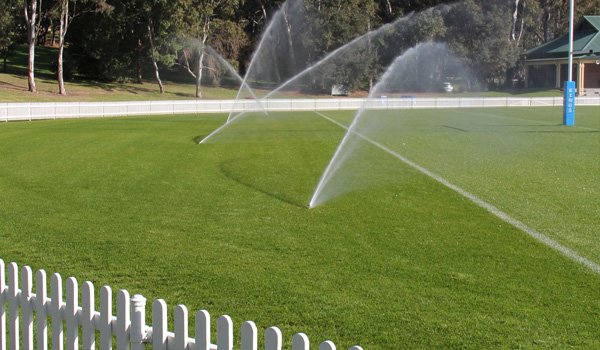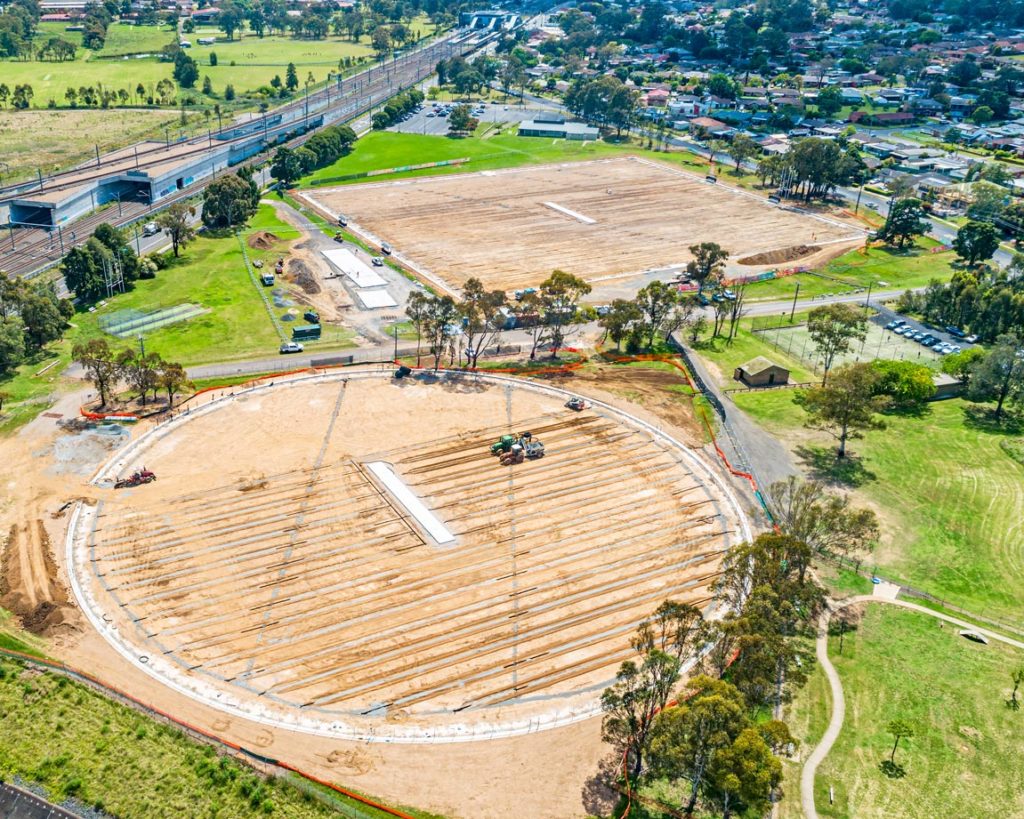What to consider for your sports field irrigation.
Sports fields require specialised irrigation and drainage. Inefficient drainage paired with wet weather will quickly have a negative impact on the quality of your sports field. Not enough rainfall paired with inefficient or no irrigation and you will soon have a dry and dusty field.
Simply, inefficient irrigation and drainage systems means your sports turf surface will quickly fall into disrepair. A knowledgeable irrigation and water management team is key to getting your sports field irrigation right.
Commonly, problems occur following surfaces being used during adverse weather events. This impacts the regular maintenance regime, and despite best efforts can cause compaction, uneven surfaces and a poorly drained field. A harder field can also result in more player injuries, which no one wants.
It’s important to design, supply and install a sports turf irrigation system that works for you. That means, it suits the way your fields are used, how heavily they are used, the local climate and weather conditions, along with the coverage by your current system. A more modern irrigation system and high-quality components will also help to ensure their longevity. These contemporary systems can also be fully automated, or remotely controlled for teams who aren’t always on site.
Large rainwater tanks ensure customers have a sustainable and independent water option for preparing fields and with the ability to access water onsite. They are a great option when budget and space allows. They can save you money in the long run by harvesting rainwater – and they’re a sustainable and environmentally friendly option.
Find out more about our sports turf management services here.
Irrigation planning – what do you need to consider?
When planning your irrigation system, you should be planning for efficiency, sustainability and return on investment.
Specific aspects to consider when assessing your irrigation needs include:
- How much water is needed to maintain turf quality
- How your sports surface will be used
- How frequently is this use, and when are the most commonly used times?
- What cost savings you can achieve through more efficient water usage
- Your climate conditions, for example, is your area prone to drought or flooding?


Considering drainage
When it comes to drainage, it is crucial to do it properly early on to avoid headaches at a later date. If your surface is suffering from poor drainage, the first step is to work out why.
Was the construction of the surface inadequate? Has it been poorly maintained? Or perhaps it is just suffering the wear and tear from overuse. You might even be finding significant water loss from evaporation is blowing out your budget.
If your surface has not yet been constructed, this is an important part of the process, and one that should be carefully planned.
Wondering how to estimate your water requirements?
Sports field irrigation can be complex. Here are some answers to frequently asked questions.
How much depends on your turf species, local climate and how much rainfall you receive. During the hotter months, sports fields need a lot of water to remain healthy. It is important to irrigate at times when evaporation is low, and to do this efficiently.
It is recommended to water sports surfaces deeply less often, rather than frequently.
Sports fields drain a number of ways. This can be via run off, natural soaking of water into the soil, or by an efficient irrigation and drainage system. Few sports fields will remain at optimum condition without an efficient irrigation system.
Surface drainage refers to how much water stays on the surface of your sporting field, and how effectively your irrigation and drainage removes this water from the surface. A sign of poor surface drainage is when the water puddles and stays soggy and muddy.
The effective functionality of irrigation and drainage systems is critical to the healthy upkeep of the playing surfaces and important to player satisfaction while inefficiencies can lead to high operational costs. There are a number of improvements that can be made, however these depend on the current state of your sports surface.
Ageing infrastructure should be assessed before major complications arise, and where appropriate replaced. This ensures far more sustainable long-term outcomes. Like all mechanical systems, sprinklers, pipes, fittings and other components, they all experience wear and tear over time and will require replacement at some time.
Water storage tanks are a great option for collecting rainwater and overflow during the wet season. This helps to conserve water and use it more efficiently during the drier months or times of drought.
Aerating the surfaces can be effective but some problem areas may require earthquaking machines where powerful vibrations in the sub-surface disrupts the compacted grounds and creates cracks and fissures to allow water to disperse more easily and to create an improved soil environment for healthy turf grass growth.
Automatic systems and modern technology enables more efficient water usage, and consequently better and more cost-effective results.
Maintaining a regular service schedule so you can stay on the front foot and avoid major and costly repairs is also key.

